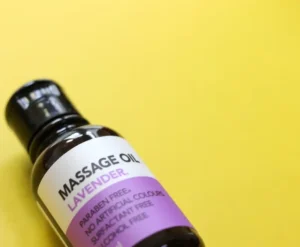Here Are Some Tips for People With Sensitive Skin
According to dermatologist Dr. Markowitz, there are three main types of skin sensitivity: irritant, allergic and photo-sensitive. Irritants cause swelling, inflammation and itching. Allergies cause hives, rashes and eczema. Photo-sensitivity causes dryness, peeling and flaky patches.
Skin sensitivities can occur anywhere on the body, including the face, scalp, ears, hands, feet, lips, mouth, neck, shoulders, chest, genitals and eyes. If you experience one of these symptoms regularly, consult a dermatologist immediately.
Allergic Reactions to Jewelry
Jewelry can contribute to more than just sensitive skin. It can also pose a risk to those with metal allergies. Allergic reactions to jewelry include things like skin irritations, rashes, and even breakouts, according to the American Academy of Allergy, Asthma & Immunology.
These types of reactions can occur because some jewelry contains materials such as gold, silver, copper, lead, zinc, cadmium, chromium, nickel, platinum, palladium, mercury and tungsten.
While there are no hard numbers about how many people suffer from metal allergies, it is believed that anywhere from one to five percent of the population suffers from sensitivities to metals. However, among those with metal allergies, up to 50 percent report having an allergic reaction to certain jewelry items.
The most common symptoms of metal allergies include:
• Skin rashes
• Redness
• Dryness
• Blistering.
Best Metals for Sensitive Skin
There are several different types of jewelry that can be worn by anyone who has sensitive skin. Some of them are made out of precious metals, while others are made out of non-precious metals. The following list includes the best metals for sensitive skin.
Gold
Although gold is one of the most popular precious metals, it’s actually very difficult to find pure gold. In fact, there isn’t even enough pure gold in the world to fill up a single Olympic sized swimming pool. Instead, gold is mixed with other materials like copper, nickel, palladium, silver and platinum to make jewelry.
While the majority of jewelry sold today contains some amount of base metal, high-purity gold jewelry is still sought after because it offers better durability, color stability and conductivity than lower quality products. High-quality gold jewelry is often referred to as “14K,” “18K,” “22K,” or “24K.” These numbers refer to the percentage of gold alloyed into the product. For example, 18k refers to approximately 75% gold and 25% another metal.
The best way to tell whether you’re buying real gold or fake gold is to check the karatage. A 14K ring will always say 14K on the inside band. Fake rings usually say 24K on the outside band. If you see a number over 20 on the outside band, you’ve found a cheap knockoff.
Gold plated
The idea behind gold plating is to make something look like real gold without actually being gold. This process involves coating one piece of material with another metal such as nickel or zinc. While gold plating does cost less than actual gold, there are drawbacks. For example, most gold plated items aren’t actually gold, and some of the materials used to make gold plated products can irritate the skin.
To determine whether or not a particular item is truly gold plated, check out the metal composition listed on the tag. If it says “gold,” “18k,” or “sterling,” then you’re good to go. Silver plating isn’t nearly as dangerous as gold plating, and many people wear silver jewelry every day without issues.
However, if you’re looking to buy a gold plated ring, necklace, bracelet, etc., you’ll want to avoid mixing different types of metals together. In addition to causing irritation, the combination of metals could potentially corrode over time. Instead, opt for gold plated sterling silver whenever possible.
Platinum
The most precious metal known to man, platinum is used extensively in medical devices and implants because it doesn’t react well to heat or chemicals. Platinum is also used in dentistry because it won’t corrode teeth. In addition, platinum is one of the few metals that does not tarnish when exposed to air.
While a bit rarer and much more expensive than silver or even gold, platinum is still considered a very affordable metal. Because of its durability and resistance to wear and tear, platinum is often chosen over silver or gold for jewelry.
Sterling silver
Sterling silver is one of the best materials you can use for jewelry because it is affordable, durable, hypoallergenic, and easy to work with. It can even be used for everyday wear, like rings, necklaces, bracelets, and earrings.
The term “sterling” refers to the purity level of silver in the metal. When the word “sterling” appears next to the price of an item, it indicates that the item is made out of high quality silver. For example, a $10 piece of sterling silver might cost about 50 cents to make.
Titanium
Very few people actually encounter any issues when they wear steel jewellery. However, there are certain situations where it might cause trouble. Titanium reacts very slowly to acids and alkalis, and is therefore considered one of the most hypoeallergic materials. However, it does react to certain chemicals such as chlorine gas, hydrofluoric acid, sodium hydroxide, potassium hydroxide and ammonium hydroxide.
In addition, titanium is non-reactive against many elements including aluminum, copper, nickel, platinum, silver, tin, tungsten, zinc and zirconium. Therefore, it is suitable for use in contact with food, beverages, cosmetics, drugs, pharmaceutical products, and medical devices.
Surgical stainless steel
Body piercing enthusiasts know that there are many different types of metal used in body jewelry. From titanium and nickel to platinum and palladium, each material has its pros and cons. One type of metal that seems to be gaining popularity among those looking to pierce themselves is surgical stainless steel. This material is commonly known as SSS and can be found in both solid and hollow forms.
Here’s Why Some Types of Jewellery Can Trigger An Allergic Reaction for People With Sensitive Skin
Costume jewellery is often seen as a cheap alternative to real gold items, but the truth is, some types of costume jewellery can actually irritate your skin. While you might think that fake diamonds are harmless, many people with sensitive skin find that they react badly to gemstones like faux rubies, emeralds and sapphires. If you’re prone to breakouts, avoid costume jewellery with stones such as pearls, opals and even rhinestones.
But what about those fake gold necklaces and bracelets that look just like genuine gold? Are they safe to wear? In most cases, yes! Gold is one of the safest metals around. However, there are a few exceptions where you should steer clear of costume jewellery. For example, if you have a severe allergy to nickel, you shouldn’t wear any type of metal jewellery including fake gold. And if you suffer from eczema, dermatitis or psoriasis, you’ll want to limit your exposure to costume jewellery since it could worsen your symptoms.
If you do decide to go ahead and buy costume jewellery, make sure that you choose something that isn’t too heavy and bulky. Try to opt for something lightweight and small so that you don’t feel weighed down while wearing it. Also, ensure that the piece fits well over your clothes and doesn’t move around too much.
When in Doubt, Use Metal-Testing Kits
Metal testing kits are great tools for anyone looking into purchasing gold or silver jewelry. They can tell you what type of metal your piece is made of — whether it’s pure 24K gold, sterling silver, or another alloy. You can use them to determine how much precious metal is inside your ring, pendant or necklace.
You can buy a simple metal-testing kit online for about $50. Just open up the package and follow the instructions. If you want something more comprehensive, there are professional kits available that include everything you need to test your jewelry. These kits usually run anywhere from $60-$100.
If you’re buying jewelry and you’re unsure of its alloys or quality, try one of these kits. They can help you avoid spending money on pieces that aren’t worth it.
FAQs
What is hypoallergenic jewelry?
Hypoallergenic jewelry refers to jewelry made of materials that do not cause an allergic reaction in people with certain types of allergies. There are different kinds of allergies, each with varying degrees of severity. People with nickel allergies often experience rashes, hives, itching, swelling and even breathing problems. Some people react to gold too, though less frequently.
Jewelry is considered hypoallergenic if it contains no nickel, or if the amount of nickel present is low enough that the wearer won’t notice any adverse effects. Gold and platinum are both considered hypoallerigenic because they don’t contain any nickel. Platinum is actually one of the least reactive metals out there, meaning it doesn’t trigger reactions nearly as often as other metals.
What is a nickel allergy?
Nickel is one of those metals that we encounter every day. It is used in many products like coins, jewelry, tools, and even some clothing. Nickel allergies are caused by an immune system response to nickel proteins. When someone develops a nickel allergy, the body reacts to nickel proteins in everyday items such as jewelry, keychains, belts, etc.
There are other kinds of metal allergies too!
Copper allergies are extremely rare. There hasn’t been much research done into copper allergies because it’s such a small percentage of people who experience one. However, there are some studies that show that less than 2% of people who wear jewelry develop a copper allergy.
Chromium and cobalt are both metals used in jewelry that could potentially cause an allergic reaction. But those reactions aren’t nearly as common as nickel allergies. Someone wearing jewelry containing chromium or cobalt is more likely to come into contact with them at work from a material like concrete, rather than jewelry.
So when describing a necklace or pair of earrings as being “hypoallergenic,” we’re specifically referring to jewelry without nickel.
Is sterling silver hypoallergenic?
Hypoallergenic jewelry is becoming increasingly popular among allergy sufferers. But there are many misconceptions about what makes something “hypoallergenic.”
In fact, while sterling silver is indeed hypoallergenic, it isn’t always nickel free. And even if you’re allergic to nickel, that doesn’t mean you won’t want to wear it every day.
As for why sterling silver is hypoallergenic in general, it’s because it contains no lead, cadmium, arsenic or mercury.
What is 925 sterling silver?
925 is a mark of authenticity in genuine American sterling silver. This mark describes the percentage of silver content in the metal. Pure sterling silver is 92.5%, meaning it contains 92.5% pure silver and 7.5% copper. Other materials such as brass are often added to increase durability or add color.
You may also see markings like “ster,” “SS,” or “st.” These stand for sterling silver, and you’ll find them stamped into some pieces of jewelry. They’re usually found on bracelets, necklaces, rings, earrings and cufflinks.
Low-quality silver jewelry with a low percentage of silver content may contain more nickel than some people would like. There are however, many other choices for people who are sensitive to nickel. If you want to avoid nickel, look for sterling silver without the “ster” marking.
Genuine sterling has 92 percent pure (or 100 percent) fine gold; 7 percent copper; and possibly some other metals. It comes in various grades, which depend on how much copper is included. A higher grade of sterling silver is generally considered better because it has less nickel.
Nickel-free sterling silver jewelry works well for those with sensitive skin. Many companies use nickel-free sterling silver, but the price tag might be slightly higher.
Is stainless steel hypoallergenic?
Stainless steel is one of the most popular metals used for jewelry today. It resists corrosion and heat and is easy to clean. But does it cause allergic reactions like gold and platinum do? Many people are surprised to learn that stainless steel contains trace amounts of nickel. A study published in 2012 found that about half of those tested had some level of nickel sensitization, meaning they could react to traces of nickel. Nickel allergies affect about 10 million Americans.
If you’re concerned about nickel allergies, there are alternatives to stainless steel. Some manufacturers use titanium, palladium, or rhodium instead of nickel. Titanium is hypoallergenic and doesn’t contain nickel, while palladium and rhodium are less common and costlier. Platinum is another option, but it costs much more than stainless steel.
When You Have Sensitive Skin, Finding Jewelry Can Be Tricky. Here’s How to Get Started
Jewelry shopping can be stressful enough without having sensitive skin. Whether you’re looking for necklaces, bracelets, rings, earrings, or something else entirely, it’s important to know what types of jewelry are best for your skin type. Some people say that certain colors cause breakouts while others swear off gold altogether. There are many things to consider when choosing jewelry, including how much you want to spend, where you’ll wear it, and whether or not you prefer shiny or matte pieces.
If you do decide to pile on the bling, make sure you keep some guidelines in mind. First, avoid wearing too much jewelry at once. If you’re wearing multiple bracelets, don’t put one on each wrist. Instead, try putting one on each hand and tucking the rest away. Second, steer clear of heavy metals like silver, copper, and nickel. Third, if you tend to have acne problems, go for softer materials like leather, silk, and cotton. Finally, if you’ve got eczema, psoriasis, or dermatitis, opt for hypoallergenic options. Here are some tips to help you find the perfect piece of jewelry for your sensitive skin.
1. Know Your Skin Type
The very first step toward finding the perfect pair of earrings is knowing exactly what type of skin you have. Knowing your skin type helps you pick out jewelry that won’t irritate your skin. For example, if you have dry skin, you might want to look for items that aren’t too tight fitting. Also, if you have oily skin, you might want something that doesn’t rub against your face.
2. Consider Your Budget
Once you know your skin type, it’s time to start thinking about budget. You can buy anything you want, but there are some items that cost less money than others. For instance, if you have really dry skin, you probably shouldn’t wear any jewelry made out of metal. On the flip side, if you have super oily skin, you might be able to afford some really nice statement necklaces.
3. Choose Materials Wisely
Next, think about the material itself. Leather and silk are great choices because they feel soft and smooth. However, if you have sensitive skin, you may want to stick with something that feels more comfortable. Cotton is also a good choice because it absorbs moisture well. Silk and leather are both hypoallergenic, which means they won’t cause irritation.
4. Pick Pieces That Fit Well
Finally, choose jewelry that fits well. This includes everything from the size of the ring to the length of the chain. Make sure that whatever you choose will fit comfortably around your neck. If you have sensitive skin, it’s especially important to pay attention to these details.
5. Check Out Stores With Specialty Shops
Some stores specialize in selling jewelry specifically designed for sensitive skin. These shops usually offer products that are hypoallergenic and non-irritating. They often sell jewelry made out of natural materials such as wood, stone and bone. In addition, they carry jewelry that has been specially treated so that it won’t scratch your skin.
6. Shop Online
If you don’t live near a specialty store, you can still shop online. Many websites sell jewelry that is designed to be worn by those who have sensitive skin. Some sites even offer free shipping!





